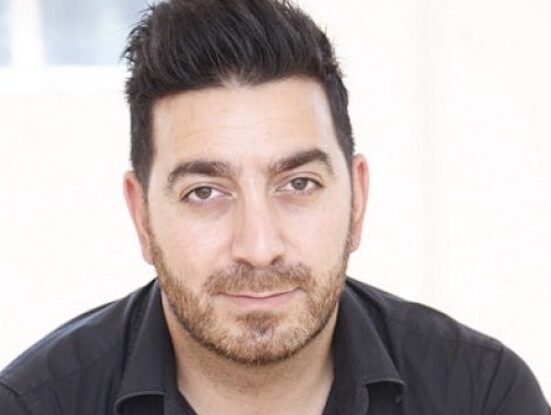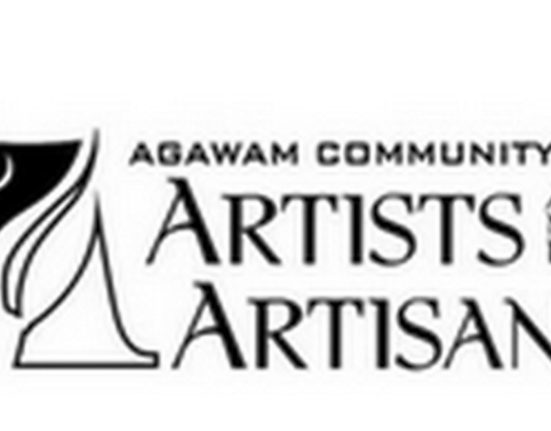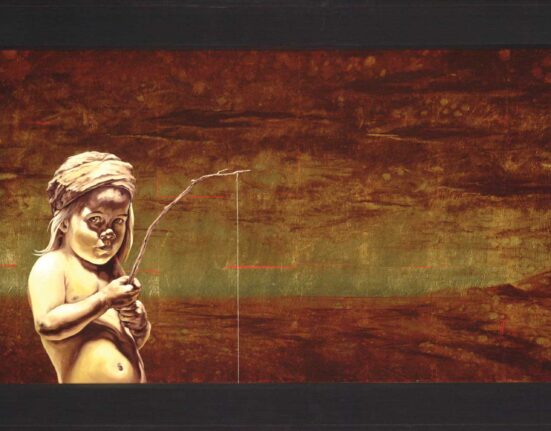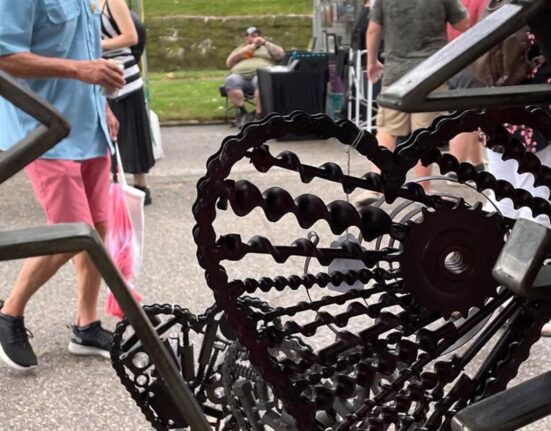To mark the occasion of his double-bill exhibition at both the Bury Street and Helmet Row galleries of Modern Art in London, Ron Nagle had his nails done. Specifically, just his thumbnails: black on his right, pale pink on his left.
Nagle, who is 84, could not travel to London for the opening, so on a grey afternoon I visited him at his home in Bernal Heights, in San Francisco, where he has lived with his wife since the 1970s. Leading me through his garden, down steps to his studio, he admitted to pre-show nerves.
To behold Nagle’s quietly riotous, absurdist but technically virtuosic ceramic sculptures, you might not expect their maker to suffer from pangs of self-doubt. The only modest thing about his work is its scale: since he began making ceramics while a student at San Francisco State University in the late 1950s, he has rarely made anything that would not easily fit in one hand. It’s a deceiving humility, however, which pulls you in close and then punches you on the nose.
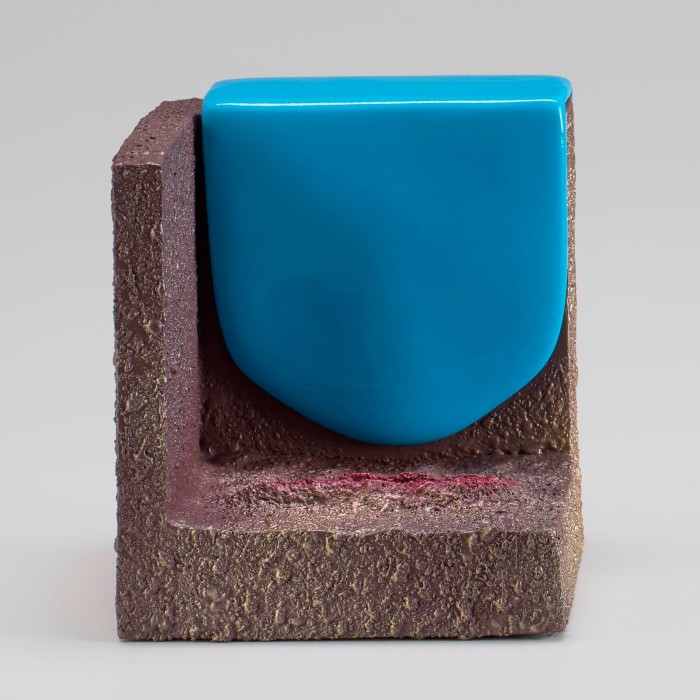
Next week, Matthew Marks Gallery will present one of Nagle’s sculptures at Art Basel Miami Beach, “Cinema Sanctimony” (2022), which is 12cm high and 11cm across and deep. In it, a plasticky blue substance drapes over what looks like a corner of purplish concrete. Nothing is quite as it seems in this ceramicist’s work.
Nagle makes many of his sculptures by slip-casting hollow forms in handmade moulds. Sometimes, however, he’ll introduce epoxy clay — not really a clay but a kind of malleable plastic — and instead of traditional glazes, he’ll use sprayed automotive paint or polyurethane, as with “Cinema Sanctimony”. He says he’s convinced himself that you can tell, just by looking, whether a form is hollow, although he concedes that might just be his imagination.
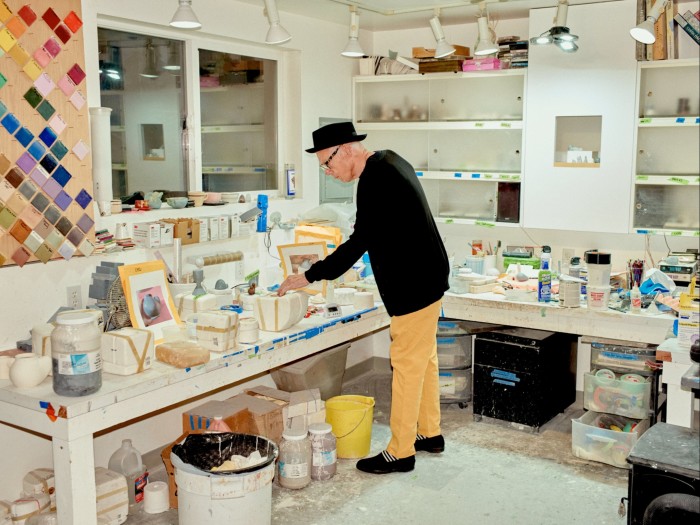
He explains how the field of Modernist ceramics he emerged from was deeply concerned with purity and an ethos of truth to materials. “I don’t know what that means, ‘truth to materials’!” he says. “The material does anything you want it to do within its own physical capacity.”
Peter Voulkos, the influential Abstract Expressionist ceramicist whom Nagle assisted in the early 1960s, was mainly involved with high-fire stoneware, often handled at imposing scale. Like many artist-ceramicists of the era, Voulkos’s work was dominated by a palette of browns. Nagle, 19 years old when he met his mentor, was itching for colour. That same year he encountered the work of a young ceramicist named Ken Price, who was making low-fired, brightly glazed cups. Price became a formative influence, and one of his best friends.
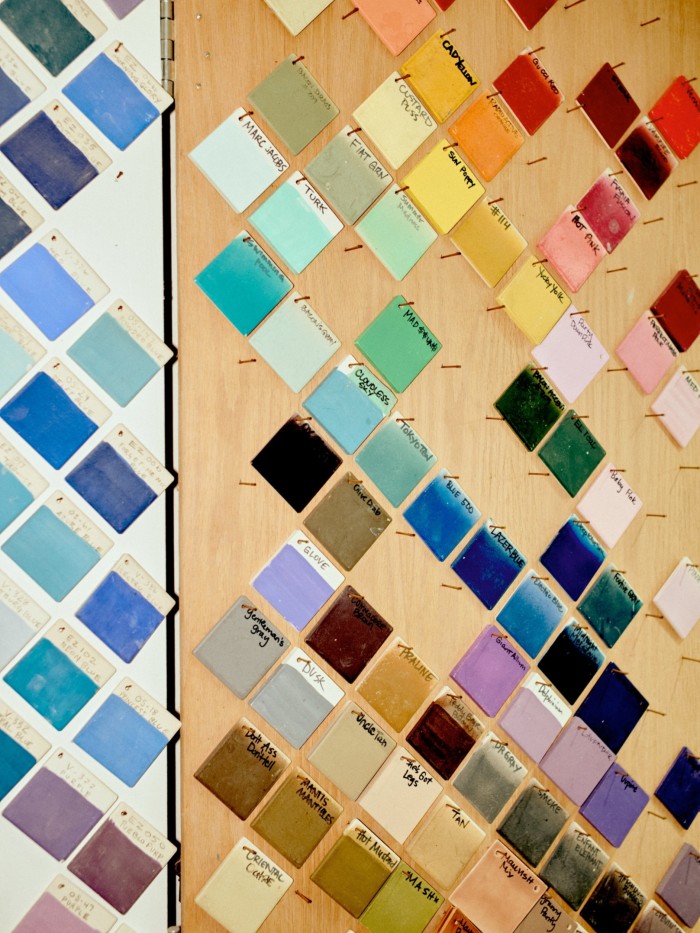

Nagle’s studio is crowded with shelves of grey plastic forms and plaster moulds and boxes of sandpaper and tubs of clay. On one wall hang colour chips labelled with names such as “custard puss” and “granny panty”. Some are ceramic glazes, others are spray paints that he has specially mixed at an automobile paint store. One of Nagle’s favourite effects is to airbrush colour on to a stuccoed surface from an angle, allowing another colour to peek from beneath, an effect he likens to the shimmer of a sharkskin suit.
Using automotive spray paint along with other such travesties as off-the-shelf transfers, lustre glazes and hobbyist china paint was, in the 1970s, heresy to the traditionalists. “The people who wear Birkenstocks and live in the country”, Nagle calls them. “They hated us,” he says happily. “As did the mainstream art people!”
These days, as Nagle acknowledges, ceramics are everywhere in art galleries and museums. But it took a very long time. That Nagle helped usher in his medium’s acceptance not through self-seriousness and monumentality but through colour, wit and illusion is testament to the uniqueness of his postmodern vision. For many years, he was an artist’s artist. Voulkos, apparently, always appreciated his outlandish and perverse output.
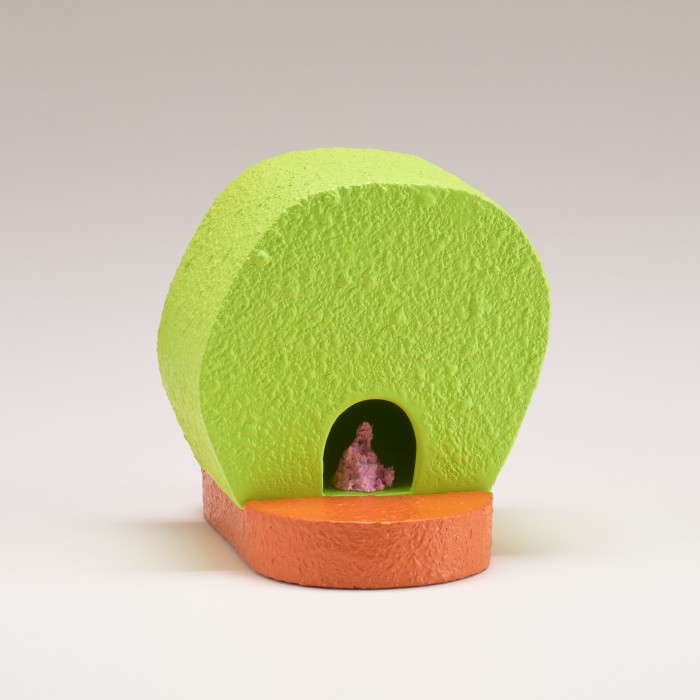
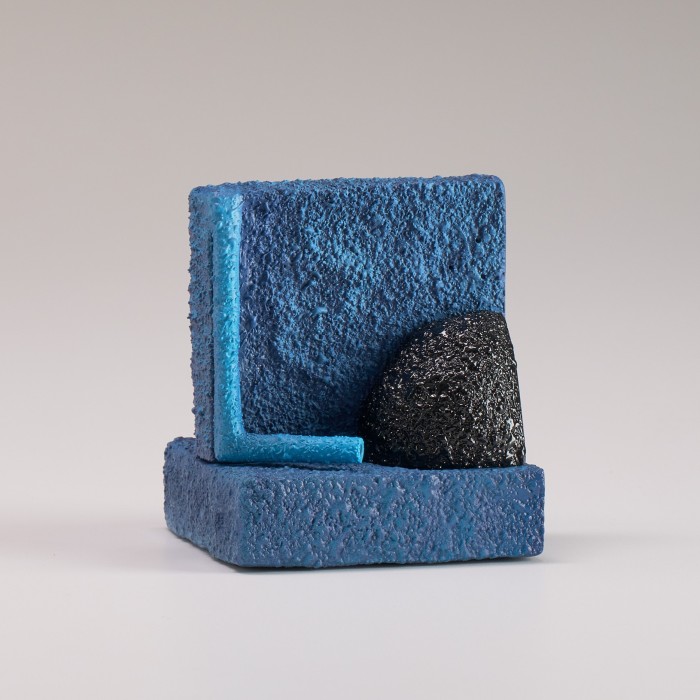
“I’m influenced by painters more than anybody,” Nagle says. The humble still lifes of Giorgio Morandi have always been important to him, as has the painting of Philip Guston, Arthur Dove and Édouard Vuillard. He mixes those fine-art influences with such aesthetic marvels as George Herriman’s Krazy Kat cartoon strip, hot-rod cars, cloud topiary, sushi, pâtisserie and aberrant tree roots. But Nagle’s abstract art is rarely referential. “Everything is a starting place but you see where it takes you,” he says.
His work is also frequently laugh-out-loud funny. His wit is most evident in his irreverent titles — “Auntie Dotage”, “Explosive Conclusion”, “Bourgeois Poo-Bah” and “Foxy Dachshund”, all on show at Modern Art — but it’s also there in the forms themselves. Ungainly (and often suggestive) protuberances sprout from the most unlikely places, and squidgy lumps play peek-a-boo from inside cubby holes.
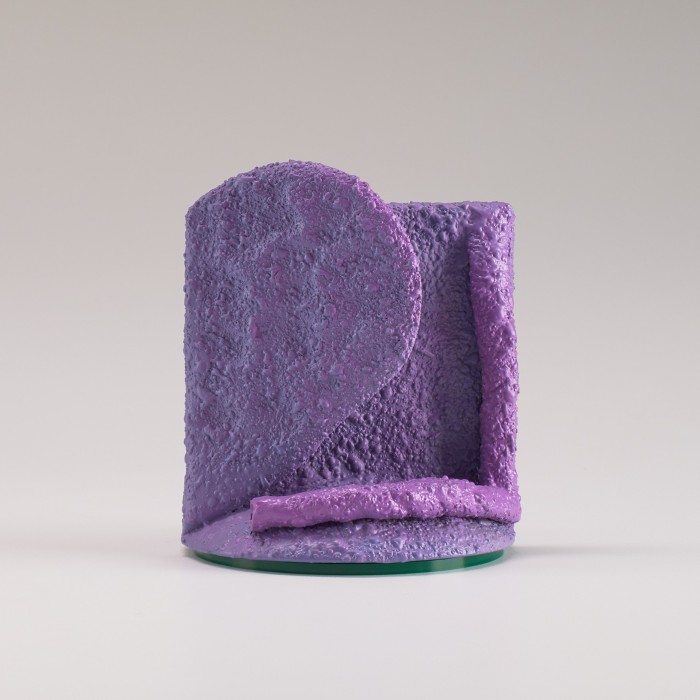

I ask about the humour in his work. “How do I say this without sounding like an egomaniac? It’s my best gift. It’s what comes to me most naturally. But it’s something that I don’t try to make happen and I try to avoid even though I can’t help it, because there’s so much cute yuck-yuck ceramics in the world today. It’s heavy-handed. Restraint is a big goal for me.” The battle between restraint and abandonment, between the ego and the id, is perhaps the central theme in Nagle’s art.
For his Modern Art exhibition, Nagle produced a series of compositions inspired by Japanese Oribe-ware platters, which are characterised by their eccentric, asymmetrical design. He envisioned miniature landscapes, then had the irresistible idea to introduce something “really corny”: an igloo next to a volcano.
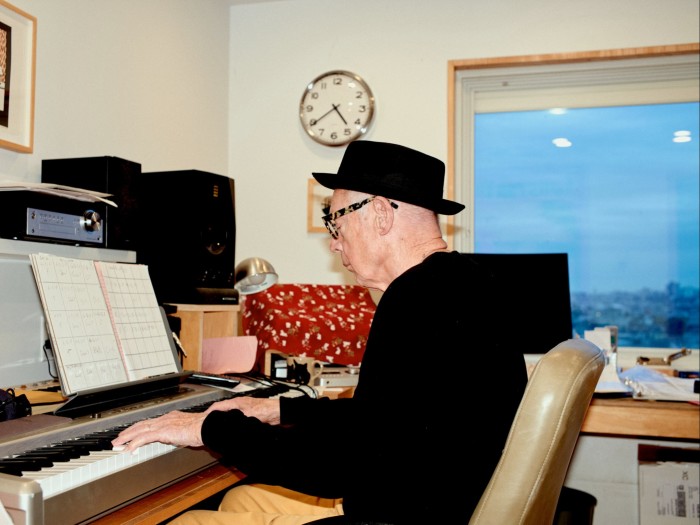
Nagle is also a musician and sometime movie sound designer; he contributed effects for William Friedkin’s The Exorcist. “I always remember when I was working on The Exorcist,” he says. “I was talking to Billy Friedkin about the sounds. I say, ‘Is that too corny?’ He says, ‘Nothing’s too corny!’”
In his career as a musician, Nagle has performed at the legendary Fillmore Auditorium in San Francisco, and has written songs for Jefferson Airplane, Barbra Streisand and Huey Lewis and the News. He does not associate with the tie-dyed psychedelia that San Francisco is known for, however. I ask him how he relates to the Bay Area art scene. “I don’t,” he responds. Funk art? “Fuck that.”
Despite its predilection for corniness and its attention to flashy finishes, there is something touchingly sincere about Nagle’s art. Style and finesse are deployed only in service of emotional impact; as Nagle’s “Finish Fetish” peers in Los Angeles knew, there’s nothing inherently superficial about surfaces. Any successful work of art, he says, “makes you feel something you haven’t felt before, that you can’t get anywhere else”.
Modern Art shows run to January 6, modernart.net
Art Basel Miami Beach runs December 6-10, artbasel.com

